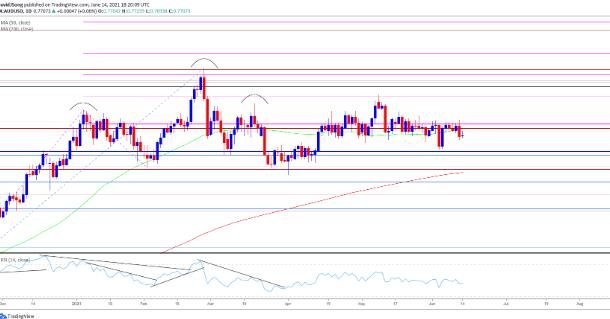The Australian dollar versus the US dollar (AUD/USD) exchange rate has been trading in a tight range below the 0.6450 level for the past week, as traders await the outcome of the central bank meetings in Australia and the US. The Reserve Bank of Australia (RBA) released its September meeting minutes on Tuesday, while the Federal Reserve (Fed) will announce its policy decision on Wednesday.
RBA Minutes Show No Surprises
The RBA minutes revealed that the central bank considered raising its cash rate by 25 basis points in September, but decided to hold it at 4.50% as the recent data did not materially alter the economic outlook. The RBA also said that it remains ready to tighten further should inflation prove more persistent than expected.

The minutes did not offer any fresh hawkish signals, as the RBA had already indicated in its post-meeting statement that it was close to the end of its rate-hiking cycle. The RBA has raised its cash rate by 150 basis points since November 2022, making it one of the most aggressive central banks in the world.
The Australian dollar did not react much to the minutes, as they were largely in line with market expectations. The AUD/USD pair remained confined in a range between 0.6420 and 0.6440, showing little direction.
Fed Meeting Looms Large
The main event for the AUD/USD pair this week will be the Fed meeting, which will conclude on Wednesday with a policy statement and a press conference by Fed Chair Jerome Powell. The Fed is widely expected to keep its federal funds rate unchanged at 5.50%, but investors will be looking for clues about the future pace of rate hikes.
The Fed has raised its federal funds rate by 125 basis points since December 2022, and has signaled that it will continue to do so until it reaches a neutral level that neither stimulates nor restrains economic growth. The Fed has also been reducing its balance sheet by $50 billion per month, unwinding some of the stimulus it provided during the global financial crisis.
The market is pricing in the possibility of one more 25 basis point rate hike by the end of this year, and two more in 2024. However, some analysts believe that the Fed could be more hawkish than expected, given the strength of the US economy and the persistence of inflation.
The US economy grew by an annualized rate of 4.2% in the second quarter of 2023, beating expectations and marking the fastest pace since 2018. The unemployment rate fell to 3.7% in August, matching a 49-year low. The inflation rate, measured by the core personal consumption expenditures (PCE) index, rose to 2.4% in July, above the Fed’s 2% target.
If the Fed signals that it will raise rates faster or longer than anticipated, or that it will speed up its balance sheet reduction, it could boost the US dollar and weigh on the AUD/USD pair. Conversely, if the Fed sounds more cautious or dovish than expected, it could weaken the US dollar and lift the AUD/USD pair.
Technical Outlook for AUD/USD
The AUD/USD pair has been trading sideways for most of September, after falling sharply from a high of 0.6675 in August. The pair is currently trading below its 50-day and 200-day moving averages, indicating a bearish trend.
The pair faces immediate resistance at 0.6445, which is the upper end of its recent range and also coincides with a horizontal line connecting previous lows in July and August. A break above this level could open the way for a test of 0.6500, which is a psychological level and also aligns with a descending trend line drawn from the August high.
On the downside, the pair has immediate support at 0.6420, which is the lower end of its recent range and also corresponds to a horizontal line connecting previous highs in June and July. A break below this level could trigger a slide towards 0.6375, which is another horizontal line connecting previous lows in June and July.
